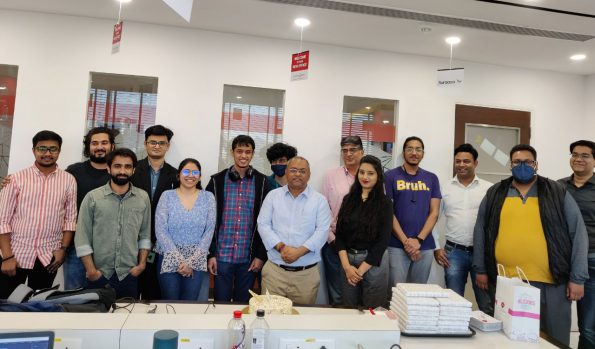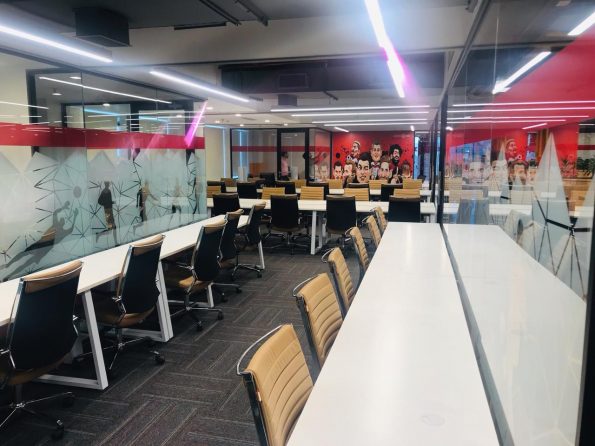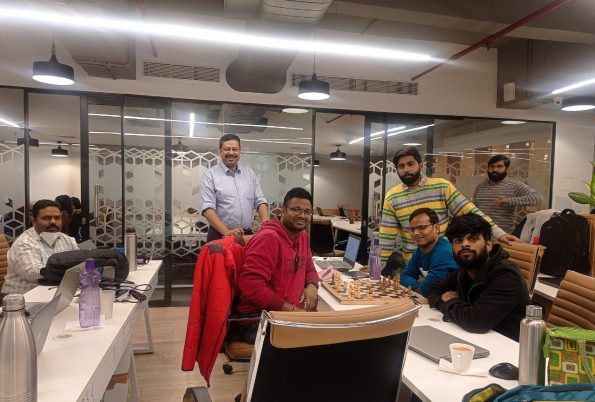Whether a startup or a small organization, every business needs sufficient funds. Unconventional fundraising ideas can often capture people’s attention and generate excitement, leading to increased participation and donations. This post aims to help you understand some unconventional fundraising ideas that have proven to be effective.
💡 Are you looking for Coworking space in Gurgaon, Noida or Delhi? We are just a call away.
Call Now: 08999 828282
10 Unique Fundraising Ideas That Actually Work in 2024
- Virtual Challenges
- Crowdfunding with a Twist
- Themed Events
- Art Auctions
- Experiential Fundraising
- Rent-a-Volunteer
- Mystery Fundraiser
- Pet Parade
- Plant Sale
- Social Media Challenges

1. Virtual Challenges
Begin by organizing virtual challenges such as a virtual 5K run, cycling challenge, or even a “no sugar” challenge where participants raise funds by getting sponsored for their participation. Virtual challenges can attract participants from all over the world and are relatively low-cost to organize.
2. Crowdfunding with a Twist
Instead of traditional crowdfunding campaigns, add a unique twist to your campaign. For example, you could crowdfund by asking supporters to pledge donations based on certain milestones or achievements, such as shaving your head, dyeing your hair a crazy color, or even sleeping on the roof of a building.
3. Themed Events
Host themed fundraising events that stand out from the usual gala dinners or charity auctions. Ideas could include a costume party where attendees dress up as their favorite movie characters or a retro gaming night where people pay to play classic video games.
4. Art Auctions
Collaborate with local artists or art students to organize an art auction where the proceeds go to your cause. This can attract both art lovers and supporters of your cause, and it provides exposure for the artists as well.
5. Experiential Fundraising
It is a good idea to offer unique experiences that money can’t typically buy, such as a cooking class with a celebrity chef, a private concert or performance, or a behind-the-scenes tour of a local attraction. These experiences can be auctioned off or offered as rewards for different donation levels.
6. Rent-a-Volunteer
At the same time, allow supporters to “rent” volunteers for a certain period to help with tasks such as gardening, cleaning, or running errands. Supporters pay for the volunteer’s time, and the proceeds go towards your fundraising goal.
Also Read: How do Entrepreneurs Get Funding for their Business?
7. Mystery Fundraiser
Host a mystery event where attendees pay to participate in solving a fictional mystery or crime. You can provide clues and challenges throughout the event, and participants can compete individually or in teams to solve the mystery.
💡 SMBs looking for HR, Marketing, Technology and Funding solutions for their business.
Call Hello Jarvis 994 8000 800
8. Pet Parade
Organize a pet parade where participants pay an entry fee to show off their pets in costume. You can also include activities like pet talent shows or best-dressed contests to engage participants and attract spectators.
9. Plant Sale
Host a plant sale featuring unique or exotic plants donated by local nurseries or community members. You can also offer workshops on gardening or plant care to attract attendees and provide additional value.
10. Social Media Challenges
Create viral social media challenges related to your cause and encourage people to participate and donate. For example, the Ice Bucket Challenge raised millions of dollars for ALS research by challenging participants to dump a bucket of ice water over their heads and nominate others to do the same.
To conclude, unconventional fundraising ideas can help you stand out from the crowd and engage supporters in creative ways. Just make sure to tailor your approach to fit your audience and cause effectively.
The Office Pass (TOP) co-working spaces available in Delhi and NCR are perfect office setups that can help you fundraise for your startup. TOP offers all the facilities that these entrepreneurs would look for to run a successful business all under one roof at cost-effective pricing. Contact us for more details at 08999 828282.
FREQUENTLY ASKED QUESTIONS (FAQS):
Question: What are some unconventional fundraising ideas that have been successful?
Answer: Some unconventional fundraising ideas that have proven effective include hosting a silent disco fundraiser, organizing a “penny wars” competition, or even holding a charity auction where people can bid on unique experiences or services.
Question: How can a nonprofit organization leverage social media for unconventional fundraising?
Answer: Nonprofits can utilize social media platforms creatively by running online challenges or campaigns, such as a “24-hour danceathon” live stream on platforms like Twitch or YouTube, encouraging donations for every hour danced.
Question: Are there any innovative ways to involve the community in fundraising efforts?
Answer: Yes, one idea is to organize a community-wide scavenger hunt with entry fees and prizes donated by local businesses. Another is to host a “Rent-a-Student” day where volunteers offer their skills and time for a fee, with proceeds going to the cause.
Question: Can unconventional fundraising ideas be environmentally friendly?
Answer: Absolutely. Organizing a “green” car wash using biodegradable soap and water recycling systems, or hosting a “zero waste” bake sale where attendees bring their own containers to minimize packaging waste, are both eco-friendly options.
Question: How can technology be incorporated into unconventional fundraising initiatives?
Answer: Implementing a peer-to-peer fundraising platform where supporters create personal fundraising pages and compete to raise the most money for the cause can be a highly effective and engaging method.
Question: How can organizations measure the success of unconventional fundraising efforts?
Answer: Organizations can measure the success of unconventional fundraising efforts through various metrics, including the amount of funds raised, the number of new donors acquired, and the level of engagement generated across different platforms.
Question: Are there any unconventional fundraising ideas suitable for small organizations with limited resources?
Answer: Small organizations can consider hosting a “dine and donate” event where local restaurants donate a percentage of their proceeds from a specified evening to the cause, or organizing a community garage sale where individuals can donate items to be sold.
Question: Can unconventional fundraising ideas appeal to younger demographics?
Answer: Absolutely. Hosting a charity gaming tournament, creating a viral social media challenge with a donation component, or organizing a themed costume party can all attract younger supporters.
Question: How can storytelling be integrated into unconventional fundraising efforts?
Answer: Organizing a “story slam” event where individuals share personal anecdotes related to the cause, or producing a short film or documentary highlighting the impact of donations, can effectively engage donors emotionally and inspire giving.
Question: What role does creativity play in the success of unconventional fundraising ideas?
Answer: Creativity is essential in capturing people’s attention and generating excitement around a fundraising initiative. Unconventional ideas that stand out from traditional methods are more likely to pique interest and attract support.









